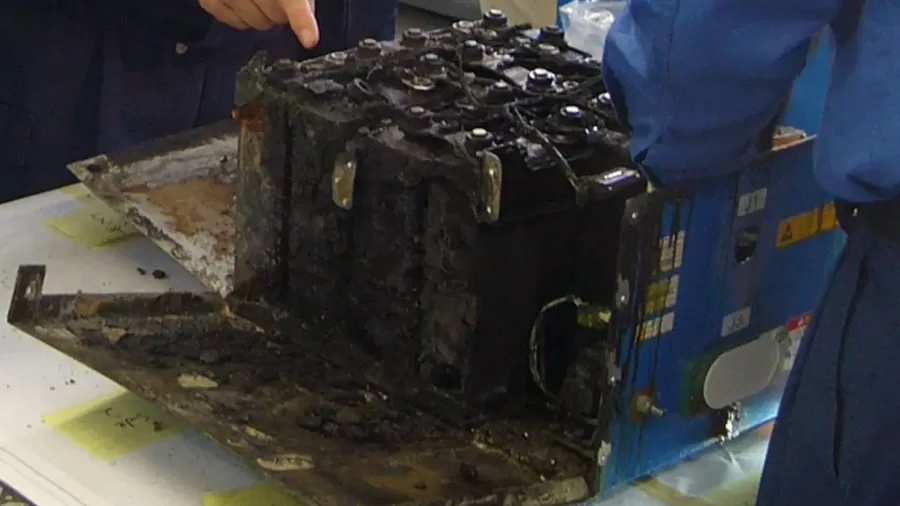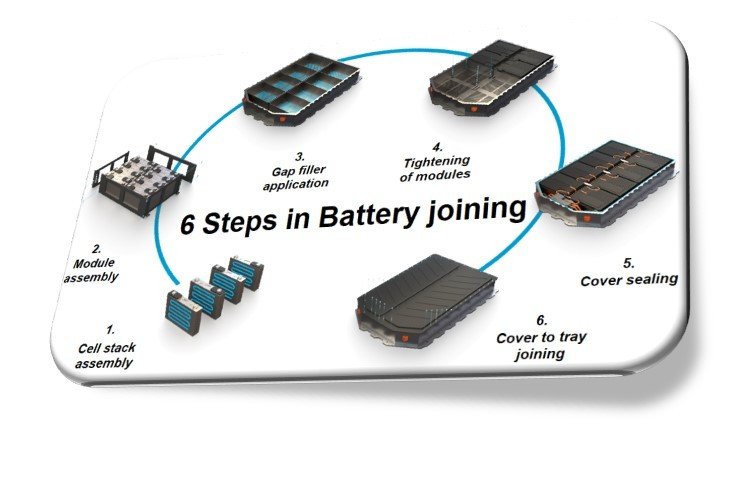The remarkable energy density and performance characteristics of lithium batteries have propelled them to the forefront of energy storage technology. However, inherent in their electrochemical nature is the potential for internal or external short circuits, an abnormal condition characterized by a sudden and drastic increase in current flow.
These short circuits can lead to rapid heat generation, potentially triggering dangerous events such as thermal runaway, fire, and explosion, thereby posing significant safety risks. Therefore, a comprehensive understanding of the factors that can induce short circuits during the lithium-ion battery assembly process, coupled with the implementation of robust preventive measures, is paramount to ensuring the safety and reliability of these power sources.
This article delves into the various reasons behind short circuits in battery-making machine operations and elaborates on the crucial preventive strategies that can be adopted to mitigate these risks effectively.
Understanding the Genesis of Short Circuits in Lithium Battery Manufacturing
A short circuit in a lithium battery signifies an unintended electrical connection between components with a significant voltage difference, bypassing the intended current path. This low-resistance pathway allows a large amount of current to flow rapidly, leading to a swift increase in temperature due to resistive heating. Several factors within the intricate lithium-ion battery assembly process can contribute to the occurrence of such short circuits:
(1) The Silent Saboteur: Electrolyte Leakage

The electrolyte, a crucial component facilitating ion transport between the positive and negative electrodes, is typically a flammable liquid. Any breach in the battery’s hermetic seal can lead to electrolyte leakage. This leakage can create conductive pathways between different parts of the battery that are not meant to be electrically connected, resulting in a short circuit. The causes of electrolyte leakage can be multifaceted, including inadequate sealing during the lithium battery pack assembly process, the use of inappropriate electrolyte compositions that may be corrosive to the sealing materials, or physical damage inflicted on the battery casing during handling or processing.
(2) Compromised Conductors: Damage to Electrode Materials
The integrity of the electrode materials – the anode and the cathode – is essential for the proper functioning and safety of the battery. Improper handling during battery cell making machine operations, the use of raw materials with inherent quality issues (such as metallic impurities), or external damage to the electrode foils during the cell assembly process can lead to the formation of conductive bridges within the cell, causing an internal short circuit. These bridges can be formed by sharp edges or burrs on the electrode materials puncturing the separator, or by the migration of metallic particles.
(3) The Thin Line of Défense: Diaphragm (Separator) Damage
The separator, a thin, porous membrane positioned between the anode and the cathode, plays a critical role in preventing direct electrical contact between the electrodes while allowing the passage of ions. Damage to this delicate layer is a significant precursor to internal short circuits. Improper handling during the winding or stacking process, the presence of foreign particles or burrs on the electrode materials, or the use of separators with inherent quality defects (such as uneven thickness or weak mechanical strength) can lead to punctures, tears, or crushing of the separator. Once the separator is compromised, direct contact between the anode and cathode can occur, resulting in a short circuit.
(4) Unintended External Connections: Electrode Contact with External Metal

The internal components of the battery, particularly the electrodes, must be effectively insulated from the external metallic casing to prevent external short circuits. Issues such as an inadequate battery shell design that fails to provide sufficient insulation, the use of shell materials with poor insulating properties, or external damage to the battery that compromises the insulation between the internal components and the outer casing can create pathways for the electrodes to come into direct electrical contact with the external metal. This contact can lead to a short circuit outside the battery.
(5) Faulty Power Delivery: Short Circuit During Charging
The charging process, while essential for replenishing the battery’s energy, can also be a source of short circuits if not properly managed. This can occur due to defects in the charger design, the use of low-quality or incompatible chargers that deliver incorrect voltage or current, or incorrect usage of the charger by the user, such as attempting to charge a damaged battery or using excessive force on the charging port. These factors can lead to overcharging or other electrical anomalies that can induce internal short circuits within the battery.
(6) The Hazards of Transit: Short Circuit During Transportation

Lithium battery pack assembly operations must also account for post-manufacturing risks. Lithium batteries can be susceptible to physical damage during transportation from the manufacturing facility to the end-user. External forces such as squeezing, impacts from dropping, or penetration by sharp objects during handling and transit can cause internal damage to the battery components, including the electrodes and the separator. This damage can lead to the formation of internal short circuits, potentially triggering hazardous events even before the battery is put into use. Improper packaging that fails to provide adequate protection against physical stresses during transportation exacerbates this risk.
Implementing Robust Preventive Measures: A Multi-pronged Approach
Preventing short circuits during the battery-making equipment manufacturing process requires a comprehensive and multi-faceted approach that encompasses stringent quality control, the selection of high-quality materials, the implementation of robust production processes, and proactive safety measures throughout the supply chain. Key preventive measures include:

(1) Ensuring Electrolyte Containment: Stringent Sealing and Material Selection
To prevent electrolyte leakage, meticulous attention must be paid to the battery sealing process. This includes employing precise assembly techniques, utilizing high-quality sealing materials that are compatible with the electrolyte composition and can withstand the intended operating temperature range, and conducting rigorous leak testing on every manufactured cell. Selecting appropriate electrolyte compositions that are less prone to causing corrosion of sealing materials is also crucial.
(2) Maintaining Electrode Integrity: Enhanced Quality Control and Careful Handling
Strengthening quality control measures during the production of electrode materials is essential to ensure their purity, uniformity, and freedom from metallic contaminants or sharp edges. Implementing strict protocols for handling electrode foils during the battery cell making machine process, minimizing mechanical stress and preventing damage, is also vital. Regular inspection of electrode materials and equipment for any potential sources of damage or contamination should be conducted.
(3) Safeguarding the Separator: High-Quality Materials and Process Control
Choosing high-quality separator materials with appropriate thickness, porosity, mechanical strength, and thermal stability is paramount. Implementing stringent quality control during the separator manufacturing and handling processes is equally important to ensure its integrity. Precise control over the winding or stacking process during lithium-ion battery assembly is necessary to prevent the separator from being punctured or damaged by electrode materials or foreign particles. Regular inspection of the separator for defects before assembly should be implemented.
(4) Designing for Insulation: Robust Shell Design and Material Selection
Selecting appropriate materials for the battery shell with excellent electrical insulation properties is crucial. Designing a robust shell structure that provides adequate physical protection to the internal components and ensures sufficient insulation between the electrodes and the external casing is essential to prevent external short circuits. Implementing rigorous quality control checks on the shell materials and the assembled battery to verify insulation performance is necessary.

(5) Promoting Safe Charging Practices: Quality Chargers and User Education
To prevent short circuits during charging, manufacturers should recommend and ideally provide chargers that adhere to stringent safety standards and are specifically designed for their batteries. Strengthening user education by clearly communicating the correct charging methods, the risks of using incompatible or damaged chargers, and the importance of not attempting to charge visibly damaged batteries is vital. Incorporating safety features within the battery management system (BMS) to prevent overcharging and detect charging abnormalities can also mitigate risks.
(6) Protecting During Transit: Secure Packaging and Careful Handling
Implementing appropriate packaging materials and transportation methods is crucial to prevent physical damage to batteries during transit. This includes using protective packaging that can withstand typical transportation stresses such as vibrations, impacts, and compression. Clearly labelling packages containing lithium batteries with appropriate handling instructions and hazard warnings is also essential. Training personnel involved in the transportation process on the proper handling of lithium batteries can further minimize the risk of damage and subsequent short circuits.
Conclusion: A Commitment to Safety Through Proactive Prevention
Preventing short circuits during the manufacturing process of lithium batteries is not merely a matter of quality control; it is a fundamental commitment to safety. By diligently strengthening quality control measures at every stage of production, meticulously selecting high-quality materials for all battery components, and designing robust and inherently safe production processes, manufacturers can significantly reduce the likelihood of short circuit occurrences.
Furthermore, extending this commitment to include the selection of safe charging systems and the implementation of protective measures during transportation ensures the safety performance of lithium batteries throughout their journey from the factory to the end-user. Ultimately, a proactive and comprehensive approach to preventing short circuits is essential for fostering confidence in the safety and reliability of battery-making machine technologies and unlocking their full potential for a sustainable future.





